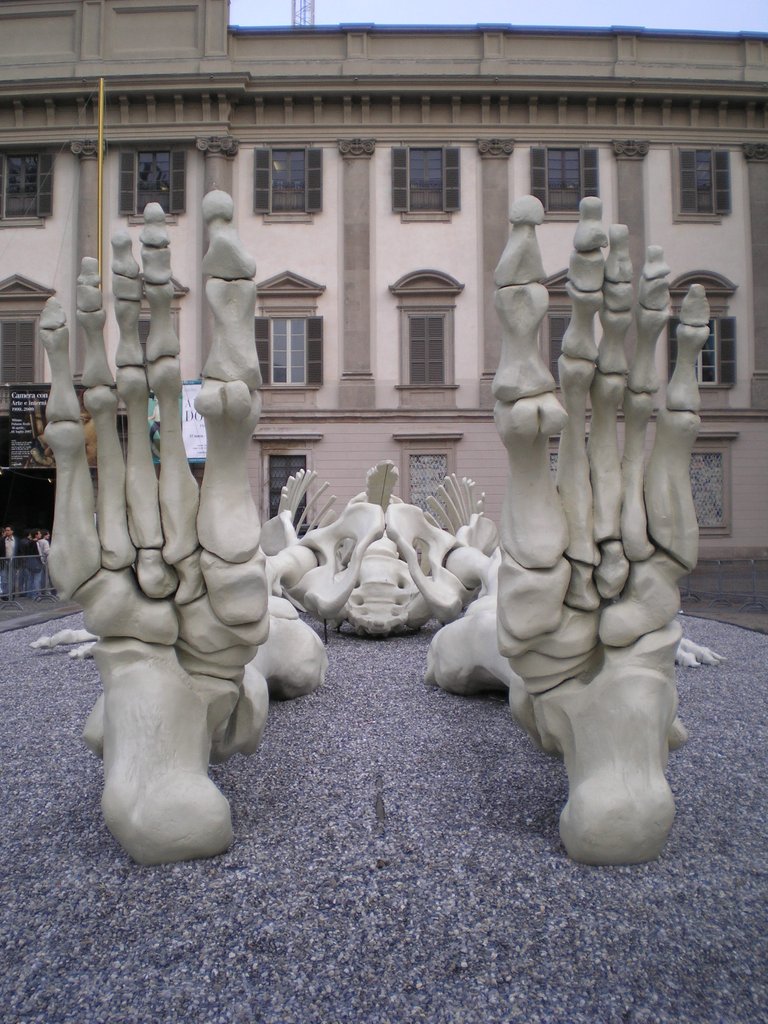
The Cosmic Magnet is a sculpture by Gino De Dominicis that can be admired in the Church of the Santissima Trinità in Annunziata in the town of Foligno, in Umbria -Italy-.
It is a work of contemporary art of great impact that for several years was surrounded by a halo of mystery since it was initially created by its author in 1988 and kept secretly in the same church, apparently because of controversies with the Vatican itself.
Even the first time it was exhibited to the public was at the Museum of Contemporary Art in Grenoble in 1990 and only six years later (we are talking about eight years after its creation) it was shown for the first time on Italian soil in the courtyard of the Reggia di Capodimonte in Naples, two years before the death of its creator in 1998.
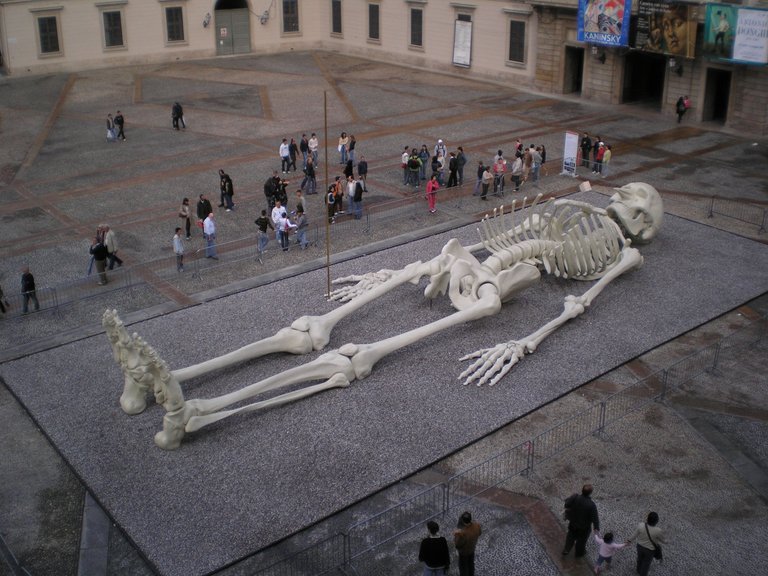
Il Imán Cósmico es una escultura de Gino De Dominicis que se puede admirar en la Iglesia de la Santissima Trinità in Annunziata en la localidad de Foligno, en Umbria -Italia-
Es una obra de arte contemporáneo de gran impacto que durante varios años se vio rodeada por un halo de misterio ya que inicialmente fue creada por su autor en 1988 y conservada en secreto en la misma iglesia, aparentemente por controversias con el mismo Vaticano.
Incluso la primera vez que fue expuesta al público fue en el Museo de Arte Contemporáneo de Grenoble en 1990 y sólo seis años más tarde (estamos hablando ya a ocho años de su realización) fue mostrada por primera vez en suelo italiano en el patio de la Reggia di Capodimonte de Nápoles, dos años antes del fallecimiento de su creador en 1998.
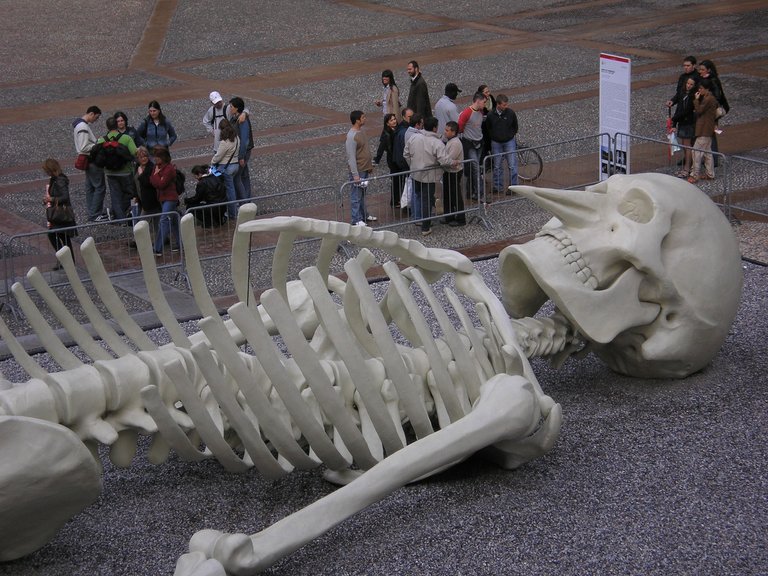
The sculpture. / La escultura.
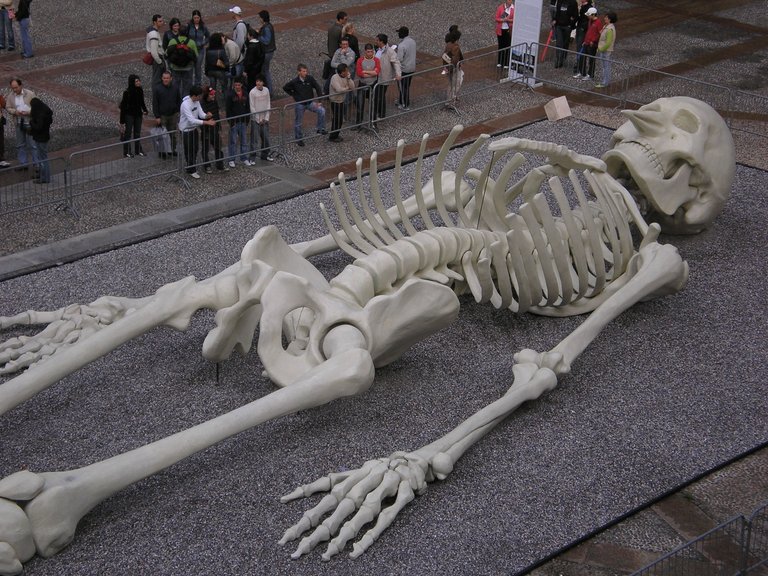
The sculpture itself is a gigantic skeleton in a horizontal position - lying on its back - 25 meters long, which has a large nose in the shape of a bird's beak with a symbolic and metaphorical meaning at the same time and which gives the name to the work itself: that beak allows it to receive and transmit energy through a rod suspended from its right hand.
Its popularity began at the dawn of the third millennium when, for reasons of preservation of various Italian works of art, the Cosmic Magnet was acquired by the Cassa di Risaparmio di Foligno Foundation (in reality these entities are banks that operate in the form of savings banks) and exhibited in various European venues such as the Reggia di Versailles in Paris, France, in the MACS Grand-Hornu in Belgium and in Italy at the Mole Vanvitelliana in Ancona, in the internationally famous Piazza del Duomo in Milan and at the MAXXI in Rome.
After this sort of cultural pilgrimage (it was never exhibited in any official museum of relief) it was placed permanently in the central nave of the ancient church of the Santissima Trinità in Annunziata of Foligno and restored for that purpose for some minor damages it had suffered.
A couple of years before the pandemic that hit hard the world and Italy in particular the work had been exhibited in 2017 at Fort Belvedere in Florence
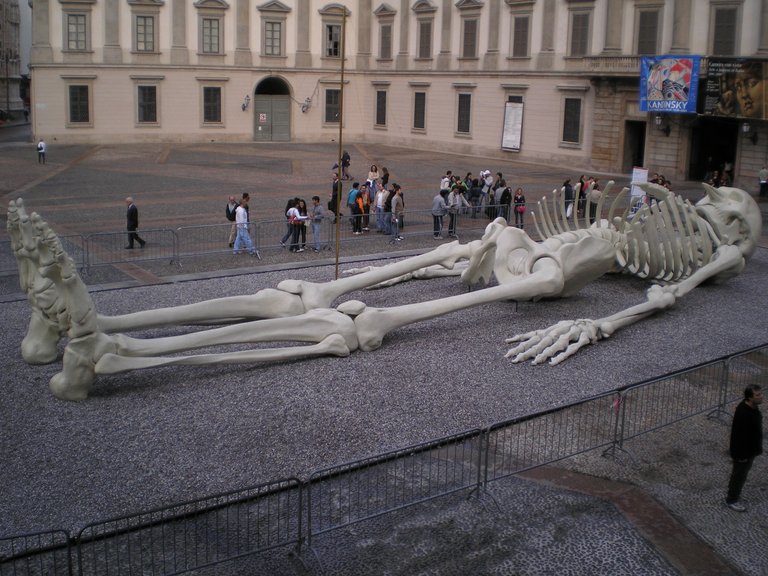
La escultura en si misma es un gigantesco esqueleto en posición horizontal -tumbado de espaldas- de 25 metros de largo, que tiene una gran nariz con forma de pico de pájaro con un significado simbólico y metafórico a la vez y que le da el nombre a la propia obra: ese pico le permite recibir y transmitir energía a través de una varilla suspendida de su mano derecha.
Su popularidad comenzó a partir del nacimiento del tercer milenio cuando por motivos de preservación de diversas obras de arte italianas el Imán Cósmico fue adquirido por la Fundación Cassa di Risaparmio di Foligno (en realidad estas entidades son bancos que operan bajo la forma de Cajas de Ahorro) y expuesta en diversas sedes de Europa como la Reggia di Versailles de París en Francia, en el MACS Grand-Hornu de Bélgica y en Italia en la Mole Vanvitelliana de Ancona, en la conocida y famosa internacionalmente Piazza del Duomo de Milán y en el MAXXI de Roma.
Luego de esta especie de peregrinaje cultural (nunca fue expuesta en ningún museo oficial de relieve) fue colocada en forma permanente en la nave central de la antigua iglesia de la Santissima Trinità in Annunziata de Foligno y restaurada a tal efecto por algunos pequeños daños que había sufrido.
Un par de años antes de la pandemia que golpeara duramente el mundo e Italia en particular la obra había sido exhibida en el año 2017 en el Fuerte Belvedere de Florencia
The artist and his work. / El artista y su obra.
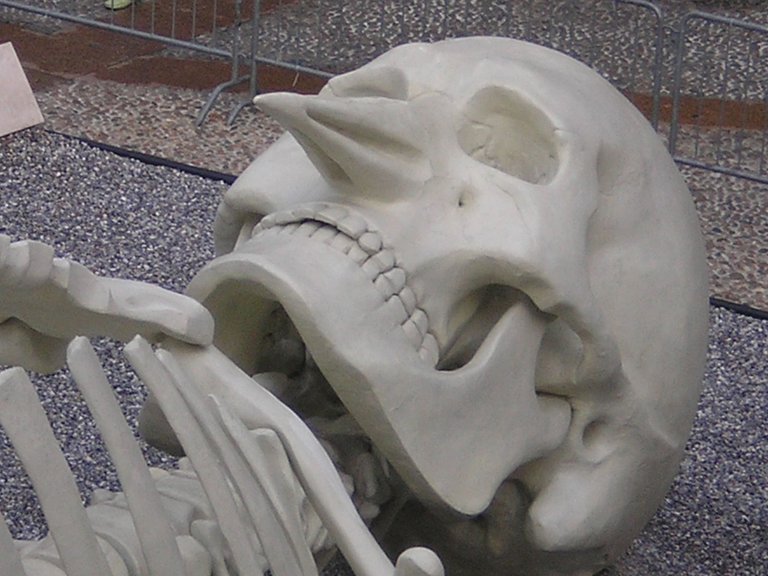
Gino De Dominicis perhaps did not reach his artistic plenitude since he died relatively young when he was only 50 years old.
Nevertheless, his work, which was clearly avant-garde, aimed to move artistic expression from museums and art galleries to public places such as streets and squares so that everyone could enjoy a work of art free of charge (something that is rare in Italy, where one must pay an entrance fee to access most cultural centers).
This provocation, which was part of his artistic life, was in his DNA from the beginning, since when, still very young, he threw giant contraceptive pills in St. Peter's Square, which caused him a very strained relationship with the Italian church and its greatest expression, the Vatican.
For the realization of the work the artist used materials such as fiberglass, iron and polystyrene.
In the last ten years of his life, Gino De Dominicis returned to painting, to which he devoted himself almost exclusively, using tempera and pencils, and rarely oils and enamels on canvas.
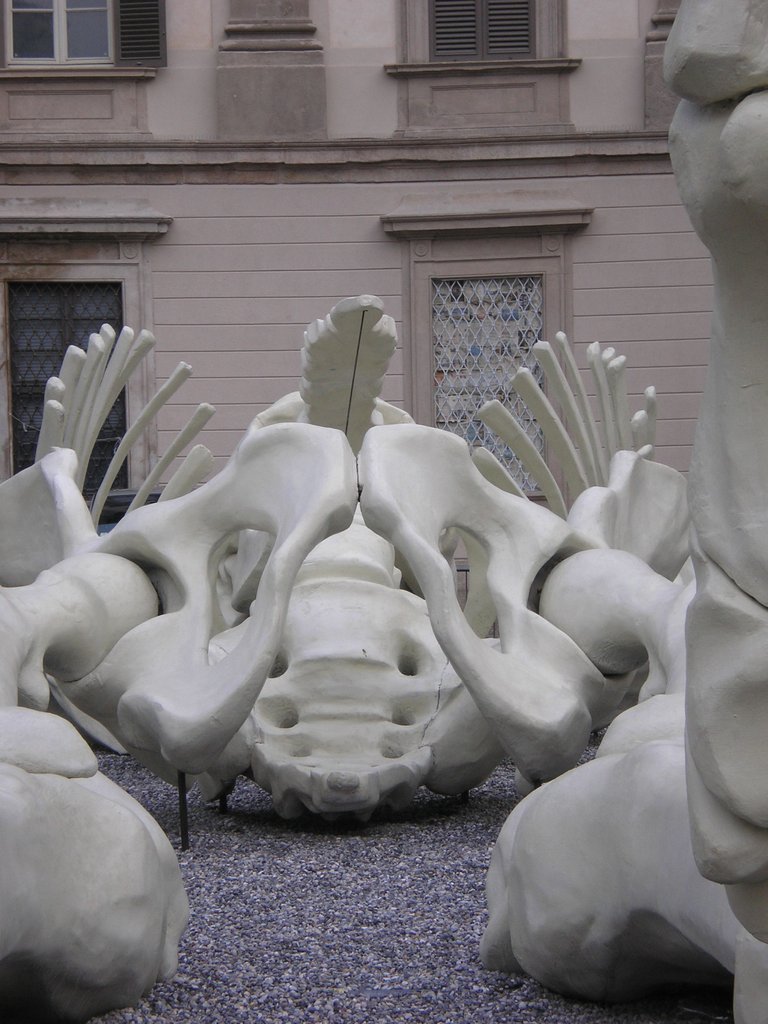
Gino De Dominicis tal vez no alcanzó su plenitud artística ya que falleció relativamente joven cuando contaba con solo 50 años de edad.
No obstante su obra, de neto corte vanguardista, tenía como objetivo trasladar la expresión artística de los museos y galerías de arte a lugares públicos como calles y plazas para que todas las personas pudieran disfrutar de una obra de arte gratuitamente (algo que es raro en Italia donde se debe pagar la entrada para acceder a la mayor parte de los centros culturales).
Esta provocación que hacía parte de su vida artística,estaba en su ADN desde el principio, ya que cuando, aún muy joven, lanzó píldoras anticonceptivas gigantes en la Plaza de San Pedro lo que le provocó una relación muy tirante con la iglesia italiana y su mayor expresión, el Vaticano.
Para la realización de la obra el artista usó materiales como la fibra de vidrio, el hierro y el poliestireno.
En los últimos diez años de su vida, Gino De Dominicis volvió a la pintura, a la que se dedicó casi exclusivamente, utilizando témperas y lápices, y raramente óleos y esmaltes sobre lienzo.

| Camera. | Nikon Coolpix P950. |
|---|---|
| Effective pixels | 16.0 million (Image processing may reduce the number of effective pixels.) |
| f/-number | f/2.8-6.5 |
| Focal length | 4.3-357 mm (angle of view equivalent to that of 24-2000 mm lens in 35mm [135] format) |
| Image sensor | 1/2.3-in. type CMOS; approx. 16.79 million total pixels |
| ISO sensitivity (Standard output sensitivity): | ISO 100-1600 |
| Lens | NIKKOR lens with 83x optical zoom |
| Monitor | 8.1 cm (3.2") |
| Still images | 6 M [2816x2112] |
| Location | Foligno (PG) -Italy- |
| Category | Art / Sculpture |
| Date | November 2021 |


